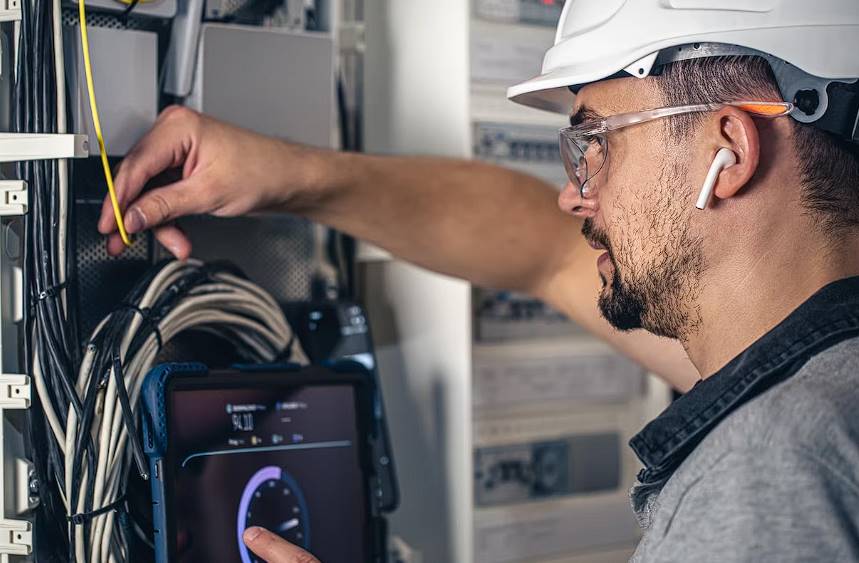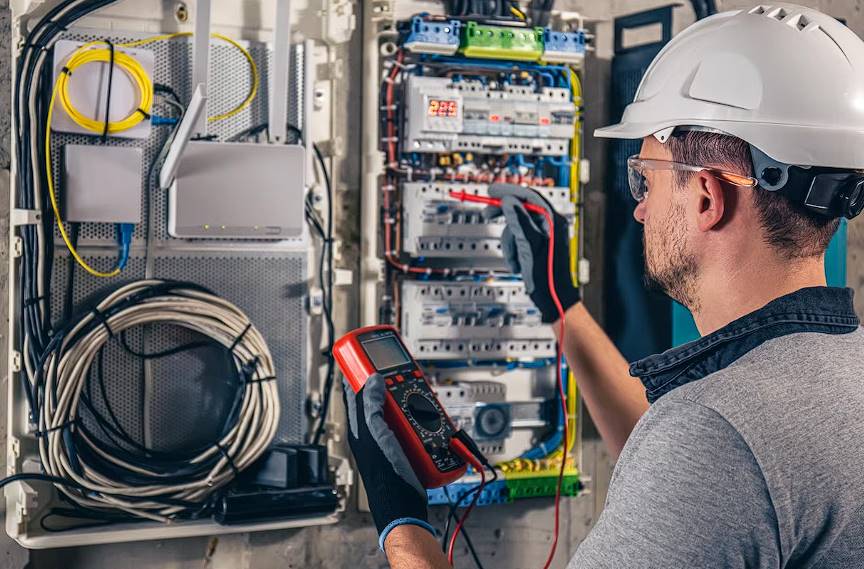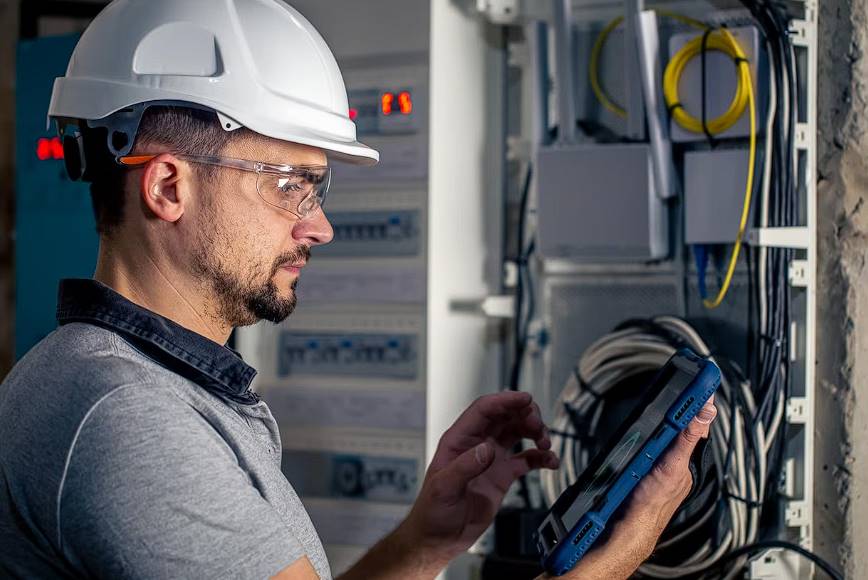Rather than being caught off guard by possible rivals, you may get ahead of the game by maintaining a cutting-edge network. You could close shop and call it quits if your network isn't up to snuff. Because of this, keeping up with network maintenance has become an increasingly important task for many companies.
Do you have doubts about whether or not to commit time and money? Read on if you want to know why maintaining your network is crucial.
Importance of Network maintenance
Due to its importance in keeping networks running well, maintenance should be built into your service offerings rather than sold separately. If you provide network maintenance services, you can save your customers time and money by ensuring their infrastructure is constantly operating at optimum efficiency and security.
- Facilitating unbroken work and maximum output
- avoiding costly breakdowns and maintenance
- Verifying the efficacy of cybersecurity defences in preventing and limiting data leaks.
It takes diverse skills and knowledge to provide comprehensive network support and maintenance. Despite possible duplication, the following are some of the most important tasks in IT that are typically responsible for upkeep:
- IT specialist. Technicians in this field often set up, configure, and troubleshoot networks and inspect cables and other physical connections.
- IT specialist. Most of an engineer's time is spent caring for the overall structure of a network, with occasional attention to individual components and devices.
- Computer system manager. These professionals oversee the upkeep and operation of a network's physical components. They might make up or keep an eye on maintenance schedules and to-do lists.
Specialised network maintenance may be provided by the original equipment manufacturer or a third-party provider as part of a contract or warranty.
Things to do on the checklist for network maintenance
Since networks can be intricate systems with many moving elements, it helps to have a checklist and a timetable for network maintenance. A software configuration review can be necessary every few months, whereas a hardware check is needed once or twice a year. A timetable is a great way to stay on top and integrate client maintenance into regular operations.
Interrupt-driven processes involve dealing with issues as they arise, such as when the car's check engine light illuminates and necessitates a visit to the technician. Some things are organised, so they undergo regular maintenance to avoid problems. In keeping with our car analogy, you can think of them as equivalent to routine maintenance, such as oil changes.
Using a checklist is recommended for structured jobs as it can lessen the occurrence and impact of interruptions.
Here are 11 things you should always do when maintaining your network, regardless of how automated it is.
Troubleshooting problems
Sometimes, the root of a network issue isn't immediately apparent, necessitating investigation. Using an escalation framework, you must collect data related to the issue and apply your knowledge to determine its origin. When it comes to things that need fixing, there are a handful of prime instances to zero in on. For instance, if there's a problem with the network, your team has to know whether it's their own doing or the ISP's. Being proactive is another area of worry.
It's better to keep an eye on things and let them know if there's a problem than to wait for them to find out the hard way that their connection could be faster or offline. In addition to providing proactive monitoring, network monitoring solutions can help locate and diagnose issues. Troubleshooting is frequently interrupted by other demands.
Making copies of important files and settings
A crucial part of network maintenance is setting up a regular backup schedule to ensure rapid data recovery during a network failure. Regular network configuration backups enable speedy disaster recovery and configuration repair.
Be sure to check the following items off your maintenance checklist:
- Depending on the client's requirements, backups are performed frequently or continuously.
- The backups' locations (off-site or in the cloud) are known to you.
- The copies have been checked and are usable.
Device inventory
Organisations expanding rapidly or experiencing high employee turnover rates might benefit greatly from maintaining an accurate inventory of all company phones, servers, laptops, and routers. Keeping an accurate stock also lets you:
- Find out if there have been any network additions
- Keep an eye on the upcoming upgrade and patch dates for your devices.
- Keep track of any maintenance or upgrades that have already been completed.
- Please don't wait for them to break; replace them when you notice they're getting old.
Your device inventory should include the device's name, date of purchase or lease, IP address, location, operating system, serial number, and vendor details.
Malware/ransomware protection
Protecting a network against viruses, Trojans, and ransomware is essential to any thorough maintenance plan. Keeping up with the ever-changing nature of these threats is essential to maintaining data security and system uptime. If you notice a drop in speed, it could be a sign that malware is slowing down the network on its way to infecting software or other infrastructure.
To accomplish this, you may need to:
- Keeping an eye out for new security updates and installing them as soon as possible
- Keeping abreast of the latest ransomware and other forms of malicious software
- Scanning the network for signs of anything untoward
- Maintaining a consistent update schedule for software
- Adjusting the parameters of software and hardware to meet security requirements
Power checks
Power outages are a major source of network downtime and slowdowns. Although uninterruptible power supply (UPS) systems are designed to continue operating regularly despite interruptions in the external source, their efficacy can diminish with age. The functionality and fitness of these systems can be assessed through testing.
It is important to monitor all network and internet upkeep aspects, including the need to expand UPS capacity as a network expands.
Network documentation
Technical records of a network's hardware, applications and software, servers, data kinds, users, and so on are collectively called "network documentation." All documentation must contain the following for each component:
- Details about when each patch was applied
- The one who finished the repair
- The problem and the solution
- Additional information, if any
Maintaining a record of the network's upkeep and repair history in one place makes it easier for you and other IT staff to obtain this data. Network documentation can also aid in troubleshooting or spotting reoccurring problems, saving your team valuable time by eliminating the need to sift through files to learn when and why maintenance was conducted. It's also helpful for learning about concerns and problems long after the staff members who dealt with them have departed the company.
Network documentation can be simplified for non-technical workers using diagramming or visualisation software, which can also show how the network has evolved.
Hardware checks
It's easy to overlook that networks rely on physical components like wire and metal that require regular inspections for damage and wear. Remove dust from filters and fans to prevent overheating and restore optimal performance. Make sure there are no exposed wires or dangling connections. Verify that all wires are in good working order, neatly arranged, tucked away, and securely fastened to the floor.
Compliance checks
It is also important to check that you have ensured that your network activities comply with all relevant compliance rules, regulations, and policies. For example,
- Making sure information is kept and erased by legal, ethical, and other factors
- Implementing measures to mandate the use of robust passwords and periodic changes to those passwords
- DNS filtering to prevent access to offensive or unauthorised sites
- Verifying proper setup of all hardware and software
Preemptive repairs
Preventive maintenance entails routine network upkeep on a time or mileage-based plan, similar to the routine inspections that car owners undergo at predetermined intervals. Even though a certain section of the network is functioning properly, it may be repaired or replaced. Fewer disruptions to corporate operations and greater network efficiency are the results of preventative network maintenance.
Configurations and upgrades
Upgrades and configuration changes are commonplace for software and hardware because:
- Patches & Updates
- Relocations, promotions, and other personnel adjustments within an organisation (such as the hiring of a new worker or the awarding of additional security clearances)
- Network modifications
While certain network issues may require immediate attention, many others can be planned for as part of an ongoing preventative maintenance strategy.
Future network growth planning
During routine network upkeep, it's important to think ahead about how the network can expand in the future. Planning that helps avoid dangers like a clogged server might be informed by documentation of past and recurring problems.
Possible Maintenance Errors in Your Network
The IT department may save time, money, and effort by instituting effective network maintenance practises and performing routine system checks, which may seem daunting.
Maintaining a company's network effectively entails monitoring, troubleshooting, and optimising its operation. While IT monitoring is used in virtually every company, bad network maintenance practices are surprisingly frequent. In this article, we'll discuss the most typical problems with network upkeep and how to fix them.
Poor Planning
Once networks were set up, they required no additional labour. Unfortunately, networks are complicated, and their traffic is always changing, so systems need regular upkeep. One common error IT departments make is failing to have an actionable strategy for finding and fixing IT issues. Instead, businesses fall prey to reactive issue-solving, which can increase the effort needed to resolve a problem by a factor of two or three.
Outdated Software and Hardware
Technology infrastructure is constantly developing. Today's cutting-edge hardware and software may be yesterday's relics in a few short years. When IT departments fail to update their systems' hardware and software regularly, networks are vulnerable to attack. Avoid this by keeping up with software updates, hardware deployments, and installation schedules.
Neglectful Monitoring
One such typical oversight in upkeep is sloppy or insufficient network monitoring. Proactive network monitoring is a must-have tactic for every serious business. Businesses may fix network flaws and inefficiencies before they have a detrimental impact by analysing traffic patterns, both good and bad.
Minimal Backups
Although adjusting the IT infrastructure when issues arise is tempting, there are better courses of action than this. When IT departments adjust systems without creating backups of the existing data, chaos often ensues. With proper data backups, your company can retain all its in-use data.
Poorly Conceived Methods of Network Security
Wishing for a world devoid of bad actors is both naive and delightful. There are a lot of bad guys out there trying to breach your network's defences. Some malicious actors collect information, plant viruses, pose as legitimate businesses, spam customers, or steal money. Businesses would do well to avoid the huge mistake of becoming complacent regarding network security.
Conclusion
Network maintenance is crucial for companies to stay ahead of competitors and ensure their infrastructure operates at optimum efficiency and security. It should be integrated into service offerings rather than sold separately, saving customers time and money. IT specialists, computer system managers, and other professionals are responsible for upkeep, ensuring unbroken work and maximum output.
A checklist for network maintenance should include software configuration reviews, hardware checks, and periodic check-ins. Interrupt-driven processes involve dealing with issues as they arise, while organized tasks undergo regular maintenance to avoid problems. A checklist is recommended for structured jobs to minimize the impact of interruptions.
Troubleshooting problems involves collecting data related to the issue and determining its origin. Regular backup schedules ensure rapid data recovery during network failures and enable quick disaster recovery and configuration repair. Device inventory helps organizations keep track of network additions, upgrade and patch dates, and completed maintenance or upgrades.
Malware/ransomware protection is essential for maintaining data security and system uptime. This includes keeping an eye out for new security updates, staying updated on ransomware, scanning the network for signs of malware, maintaining a consistent update schedule for software, and adjusting software and hardware parameters to meet security requirements.
In summary, network maintenance is crucial for businesses to stay ahead of competitors and maintain their network's efficiency and security.
Power checks are crucial for network uptime and slowdowns, as uninterruptible power supply (UPS) systems can diminish with age. Monitoring all network and internet upkeep aspects is essential, including expanding UPS capacity as a network expands. Network documentation, which includes technical records of hardware, applications, software, servers, data types, and users, helps in troubleshooting and identifying reoccurring problems.
Hardware checks involve regular inspections for damage and wear, such as removing dust from filters and fans, ensuring no exposed wires or dangling connections, and verifying proper setup of all hardware and software. Compliance checks ensure network activities comply with relevant rules, regulations, and policies.
Preemptive maintenance involves routine network upkeep on a time or mileage-based plan, resulting in fewer disruptions to corporate operations and greater network efficiency. Upgrades and configuration changes are common for software and hardware due to patches, updates, relocations, promotions, and network modifications.
Future network growth planning helps avoid potential dangers like clogged servers. Some common maintenance errors include poor planning, outdated software and hardware, neglectful monitoring, minimal backups, and poorly perceived methods of network security.
To prevent these issues, IT departments should implement effective network maintenance practices, perform routine system checks, and regularly update their systems' hardware and software. Proper data backups can help retain all in-use data and prevent chaos caused by adjusting IT infrastructure without creating backups.
Content Summary
- Maintaining a cutting-edge network is crucial for staying ahead of rivals.
- Neglecting network maintenance could lead to business closure.
- Network maintenance is increasingly vital for companies.
- Offering maintenance services alongside other offerings can save time and money.
- Maintaining optimum network efficiency and security is essential.
- Network support and maintenance require diverse skills and knowledge.
- IT specialists configure and troubleshoot networks.
- Engineers oversee the overall network structure.
- Computer system managers manage physical network components.
- Specialized maintenance can be provided by manufacturers or third-party providers.
- A checklist and timetable are essential for network maintenance.
- Regular software configuration reviews are necessary.
- Hardware checks are required once or twice a year.
- A checklist minimizes interruptions in structured jobs.
- Troubleshooting is vital for identifying network issues.
- Data collection and analysis help identify the root of problems.
- Proactive monitoring is essential to prevent network issues.
- Network monitoring solutions aid in issue detection and diagnosis.
- Making backups of important files is crucial.
- Regular network backups enable rapid data recovery.
- Keeping backups off-site or in the cloud is important.
- Inventory management tracks network devices and upgrades.
- Regular maintenance helps identify network additions.
- Malware and ransomware protection are vital for data security.
- Keeping software updated is essential to prevent malware.
- Power checks are necessary to prevent network downtime.
- UPS systems should be regularly tested.
- Network documentation records hardware, software, and more.
- Documentation aids in troubleshooting and problem-solving.
- Visualisation software simplifies network documentation.
- Hardware inspections prevent physical component issues.
- Compliance checks ensure adherence to rules and regulations.
- Preventive maintenance reduces disruptions and improves efficiency.
- Upgrades and configurations are routine for software and hardware.
- Future network growth planning is integral to maintenance.
- Effective network maintenance saves time, money, and effort.
- Proactive monitoring is essential for efficient network maintenance.
- Lack of planning leads to reactive issue-solving.
- Regular updates for software and hardware prevent vulnerabilities.
- Neglectful network monitoring is a common mistake.
- Proactive network monitoring is crucial for identifying issues.
- Data backups are vital to prevent data loss during adjustments.
- Network security should not be neglected.
- Bad actors pose threats to network security.
- Complacency regarding network security is a mistake.
- Vigilance is necessary to protect against network breaches.
- Malicious actors engage in various harmful activities.
- Network security is an ongoing concern for businesses.
- Maintaining network security is essential to data protection.
- Network maintenance is a continuous process to ensure business success.
Frequently Asked Questions
Common tasks include updating firmware, monitoring network traffic, checking hardware health, and ensuring backups function correctly.
The frequency of maintenance depends on your network's complexity and usage but should occur at least quarterly or as needed.
Yes, by addressing wear and tear, cleaning components, and ensuring proper cooling, maintenance can prolong the life of networking equipment.
Regular maintenance helps ensure your network complies with data protection and privacy regulations, reducing legal risks.
Long-term benefits include increased productivity, reduced IT costs, enhanced data security, and improved customer satisfaction, ultimately contributing to business growth and success.


